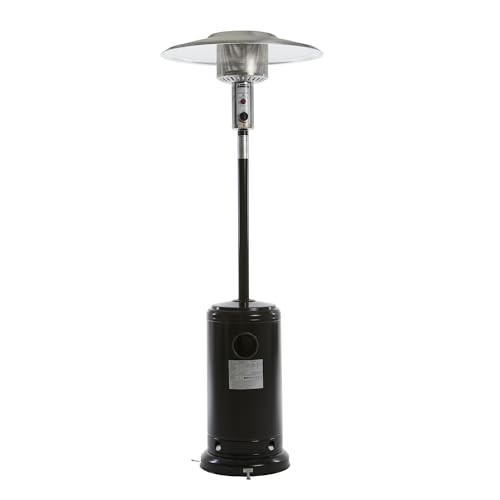Buying Gas Radiant Heaters: A Comprehensive Guide
Gas radiant heaters have gained popularity in recent years for their effectiveness and ability to provide immediate warmth. As more property owners and services search for ways to keep their spaces comfortable, understanding the functions, benefits, and factors to consider when acquiring these heating systems can be extremely helpful. This article explores the complexities of gas radiant heaters, helping potential buyers in making informed decisions.
What are Gas Radiant Heaters?
Gas radiant heaters are devices that use propane or gas to release heat directly into a space. Rather than heating the air, they warm objects and people in their area, supplying comfort more rapidly and efficiently. These heaters are popular for both indoor and outdoor settings due to their flexibility and effectiveness.
Secret Features of Gas Radiant Heaters
- Direct Heating: Unlike standard heaters that warm the air, gas radiant heaters supply direct warmth, making them an efficient option for quickly heating up spaces.
- Portability: Many designs are offered as portable systems, enabling them to be quickly moved from one place to another.
- Fuel Variety: Gas radiant heaters can be powered by natural gas or propane, providing users flexibility based on schedule and preference.
- Adjustable Settings: Most gas radiant heaters featured adjustable heat settings, enabling users to customize the level of warmth based on their requirements.
Advantages of Gas Radiant Heaters
- Energy Efficiency: These heaters transform gas into heat effectively, leading to lower energy costs compared to electrical heaters.
- Quick Heating: Radiant heat is felt almost right away, making these heaters perfect for sudden temperature level drops.
- Low Maintenance: Gas radiant heaters generally require less upkeep than electric models, making them a problem-free alternative.
- Ecologically Friendly: When powered by tidy gas, these heaters can be a more environmentally sustainable option compared to other heating techniques.
Types of Gas Radiant Heaters
When it concerns selecting a gas radiant heater, it's important to understand the various types readily available. Below are the most common options:
- Indoor Gas Radiant Heaters: Designed for indoor spaces, these heaters are usually vented or unvented and typically included integrated security functions.
- Outdoor Gas Radiant Heaters: Commonly utilized in patios or outdoor dining areas, these heaters are designed to hold up against the elements.
- Wall-Mounted Gas Radiant Heaters: A space-saving alternative, these units are perfect for smaller spaces and can be outfitted with various heat outputs depending upon the location's requirements.
- Freestanding Gas Radiant Heaters: These portable models can be utilized in various locations, perfect for those who need flexibility.
Purchasing Guide: How to Choose the Right Gas Radiant Heater
When acquiring a gas radiant heater, a number of factors must be thought about to ensure you pick the ideal model for your space:
1. Heating Capacity
- Determined in BTUs (British Thermal Units), the heater's capability identifies how much location it can efficiently warm. Purchasers must assess their specific requirements based upon space size.
| Space Size (sq ft) | Recommended BTUs (for Gas Radiant Heaters) |
|---|---|
| 100 - 200 | 5,000 - 10,000 BTUs |
| 200 - 400 | 10,000 - 20,000 BTUs |
| 400 - 600 | 20,000 - 30,000 BTUs |
| 600 - 800 | 30,000+ BTUs |
2. Kind of Gas
- Consider whether you will be using propane or natural gas, as various heaters accommodate various fuel types.
3. Safety Features
- Look for designs equipped with safety functions such as automatic shut-off valves, tip-over protection, and oxygen exhaustion sensing units.
4. Installation Requirements
- Some heaters may need professional installation, specifically vented designs. Make certain to consider the expenses and requirements related to setup.
5. Portability
- If flexibility is vital, think about portable designs that can be easily moved from one area to another.
Installation and Maintenance
Gas radiant heaters are typically straightforward to install, especially portable models. However, vented options may demand expert setup to guarantee they satisfy local safety codes.
Maintenance normally involves:
- Regular cleaning to prevent dust buildup.
- Inspecting gas connections and fittings for leakages.
- Ensuring safety features are practical.
Pointer: Regular checks around the system can assist extend its life-span and maintain safety.
Often Asked Questions (FAQs)
Q1: Are gas radiant heaters safe for indoor use?A1: Yes
, as long as they are correctly vented and equipped with necessary safety features, they can be safely used inside your home.
Q2: Can gas radiant heaters be used in enclosed spaces?A2: Unvented gas heaters can pose dangers in enclosed spaces due to potential suffocation or carbon monoxide buildup. Always guarantee sufficient ventilation. Q3: How do I know what size heater I need?A3: The suitable size depends upon the area you mean to heat. Refer to the BTU chart
above to determine your requirements. Heating Appliances : What is the difference between propane and gas heaters?A4: The main distinction lies in their energy source
; propane is delivered by means of tanks, while gas is generally piped into homes. Q5: How can I take full advantage of efficiency?A5: Ensure the heater is appropriately sized for your space, preserve it regularly, and consider utilizing it in mix
with other heating techniques for optimum comfort. Gas radiant heaters can be a terrific addition to any home or service, offering energy-efficient and fast heating solutions. By comprehending the various types, functions, and considerations
when buying, buyers can make educated decisions that fulfill their heating requires. With the right option, these heaters provide convenience, dependability, and an inviting environment during cooler seasons.

